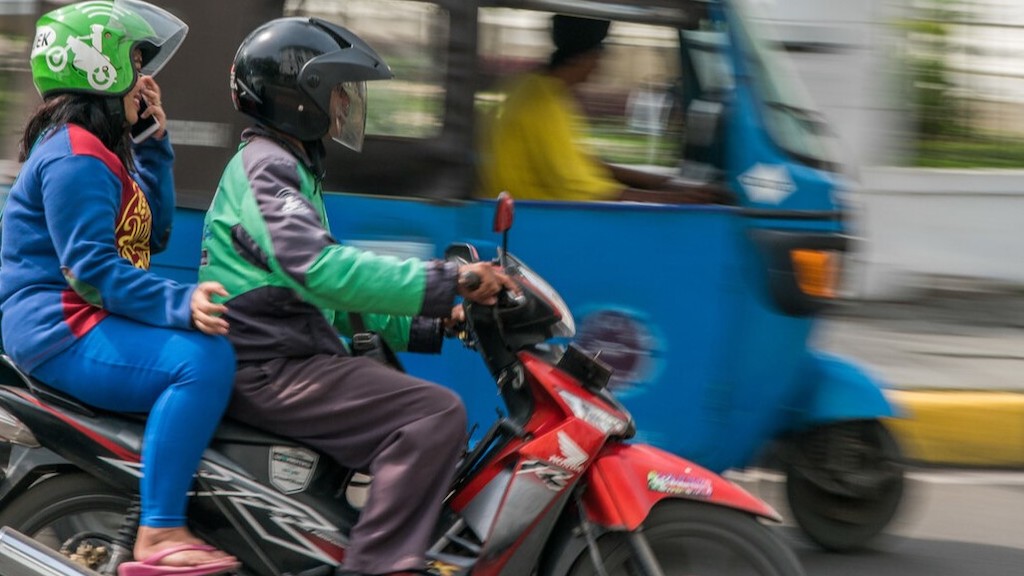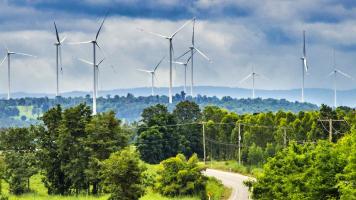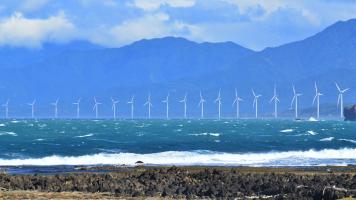
Replacing fossil-fueled with electric-powered motorcycles on the road will not be an easy task. Photo credit: ADB.
ADB study favors limiting the use of gasoline motorcycles for specific zones over subsidizing electric-powered units.
Indonesia, Southeast Asia’s largest economy, is decarbonizing the transport sector by shifting to electric vehicles, including e-motorcycles. More than 120 million motorcycles are currently on the road, but only a few e-motorcycles are in use.
Replacing fossil-fueled with electric-powered motorcycles on the road will not be an easy task. A recent study from the Asia Development Bank (ADB) notes experience from other Asian countries shows “financial incentives need to be (very) high to persuade customers to choose e-motorcycles.” On the other hand, banning or limiting the use of gasoline-powered motorcycles results in “a swift uptake of electric units.”
E-mobility is an important part of the country’s agenda to cut 29% of its greenhouse gas emissions by 2030. The focus of its e-mobility strategy is on electrifying public transport buses and electric two-wheelers. There are more motorcycle users than car users in the country and more e-motorcycle manufacturers too.
The Indonesian government is targeting two million e-motorcycles by 2025. Policies supporting e-motorcycles include Presidential Regulation Number 55 of 2019 on Acceleration of the Battery-Based Electric Motorcycle Program for Road Transportation and Presidential Instruction Number 7 of 2022 on Use of Battery-Based Electric Motorcycles as Operational Service Vehicles and/or Individual Vehicles for Central Government and Regional Government Institutions. To increase e-vehicle deployment, the government offers fiscal and non-fiscal incentives to both automakers and battery manufacturers, including tax perks for importers.
Cost–benefit analysis
Without government support, the ADB report sees the demand for electric two-wheelers in the country to be more for low-powered e-scooters, which will not replace gasoline motorcycles but bicycles and public transport. Private users are less likely to shift to e-motorcycles because of limited speed and range. In this scenario, shifting to e-vehicles will not reduce the transport sector’s carbon emissions significantly.
The study estimates achieving the 2025 target for e-motorcycles will require $1.1 billion to subsidize the motorcycles largely and charging stations. However, the economic value of emission reductions from only two million e-motorcycles does not justify the cost.
Instead of subsidies, the report says the government should take a phased approach and could start restricting urban area usage of fossil-fuel-based motorcycles in 2023 and expanding this to rural areas, with the goal of increasing the number of e-motorcycles to 12 million units in 2030 and 55 million by 2030. This proposed policy targets private and commercial motorcycle users, who will be able to enter specific zones or areas only if they are using an e-motorcycle. In addition, ride-hailing and delivery service companies may be required to “gradually increase the share of electric kilometers driven.”
This scenario is projected to cut 39 million tons of carbon dioxide, 10,000 tons of particulate matter 2.5 (PM2.5), and 65,000 tons of nitrogen oxides and result in $3.4 billion in savings annually due to reduced emissions.
Charging infrastructure
The study, which was conducted as part of an ADB technical assistance on electric transportation and charging infrastructure, focuses on Greater Jakarta (DKI Jakarta, Bogor, Depok, Tangerang and Bekasi or JABODETABEK), and Bali, as typical areas for densely populated urban and nonurban zones. It prescribes the target number or share of e-motorcycles for these areas and created an e-motorcycle charging infrastructure road map based on these areas.
Some 5.5 million destination chargers are projected to be needed by 2030. More than private users, commercial e-motorcycle users are expected to need battery-swapping services.
“Total additional electricity demand in 2030 due to e-motorcycles would be around 21 terawatt-hours, or 4% of the national consumption. The grid impact is limited. Additional investments for generation or transmission are only required after 2025. Total investments until 2030 for grid upgrades are estimated at less than $9 billion while being able to sell an additional 21 terawatt-hours of electricity per year. Investments will primarily be required in upgrading home connections. Smart charging flexibility could reduce loads and reduce the need for upgrades,” the report said.
This article was first published by BIMP-EAGA on 22 November 2022.

BIMP-EAGA
The Brunei Darussalam–Indonesia–Malaysia–Philippines East ASEAN Growth Area, or BIMP-EAGA, is a cooperation initiative established in 1994 to spur development in remote and less developed areas in the four participating Southeast Asian countries.

